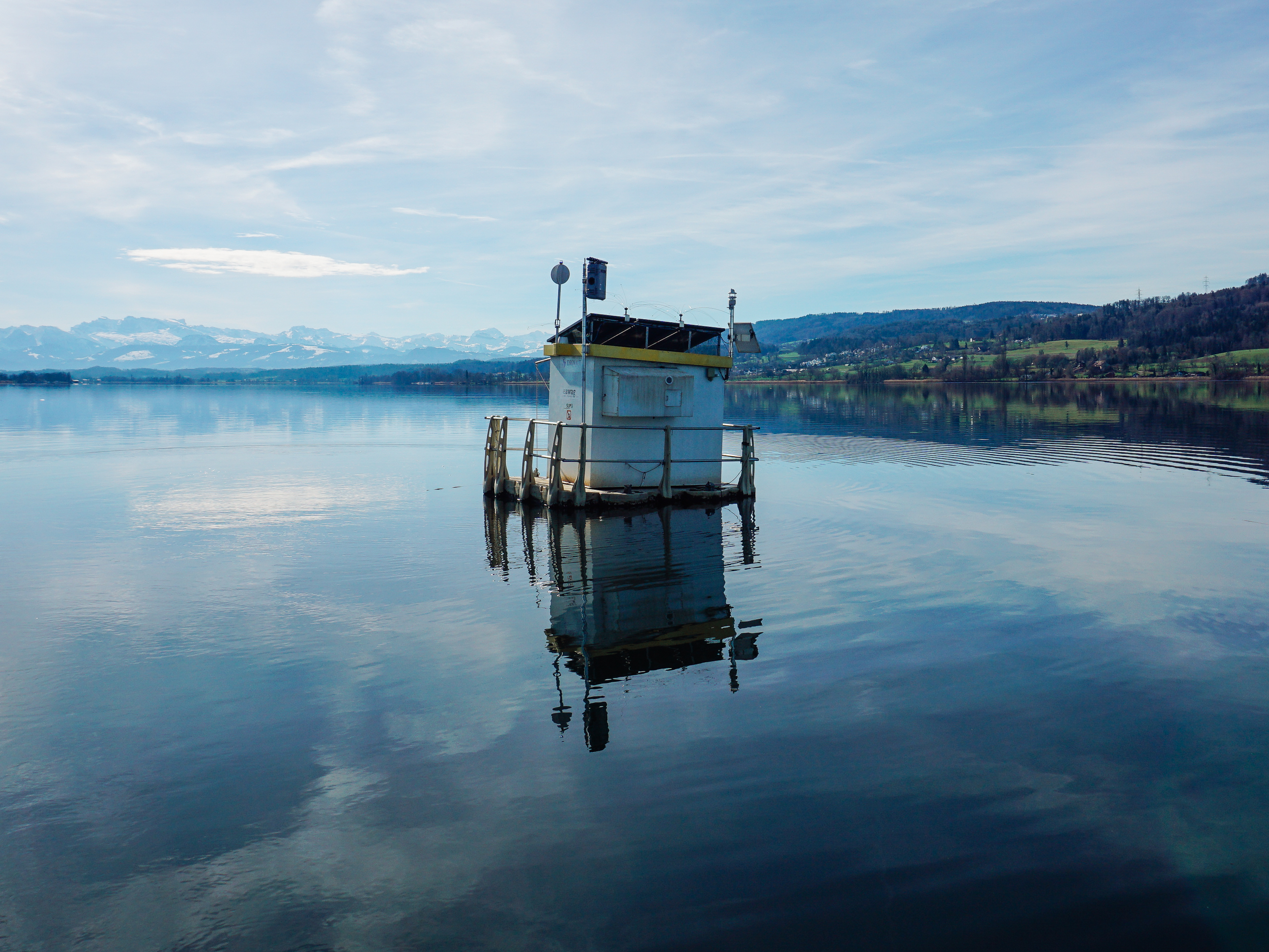New Paper: How to Track Phytoplankton Species in Lakes

In summer, Greifensee sometimes takes on a green or reddish shimmer - a visible sign of algae blooms. This phenomenon has long fascinated Loé Maire. “I have always been curious about these changes and find it fascinating to discover which species are responsible, and whether they could even be harmful.” This is what researchers regularly investigate as part of ongoing monitoring efforts. Until now, studying these blooms meant collecting water samples directly from the lake and analyzing them under a microscope in the lab, which is a time-consuming process. As part of her PhD Loé Maire is developing a new method to make monitoring more efficient. Her approach aims to make it possible to analyze entire lakes remotely.
Algae are part of phytoplankton, which are microorganisms found in most aquatic environments. When they occur in excessive numbers, they can pose a problem for both humans and ecosystems. At the same time, they are an important component of aquatic ecosystems, because they serve as a primary food source for many organisms and contribute to oxygen production and CO₂ absorption. Tracking which species are present and in what quantities is therefore essential to monitoring the health of aquatic ecosystems.
Greifensee as a test site

In her recently published paper, Loé Maire explored how different types of phytoplankton can be distinguished based on their optical properties. For this, she relied on measurement data from Greifensee. The lake proved ideal for the study: “Phytoplankton concentrations here are particularly high, much higher than in, for example, Lake Geneva,” she explains.
For her research, Loé Maire used a platform installed in the lake, which is used for various scientific purposes. It is equipped with a spectrophotometer that measures the upwelling light from the water every 15 minutes throughout the year and is powered by solar energy.
“This setup provides high temporal resolution, which is particularly valuable for observing the dynamics of phytoplankton blooms. We can even monitor it remotely from the office,” she says. The measurements capture how light is absorbed and scattered by different particles and algae in the water. Since each species absorbs light at specific wavelengths, they can be distinguished from one another.

She compared these measurements with recordings from an underwater camera (Aquascope) equipped with an optical microscope. The resulting images from the camera were classified using a machine-learning algorithm. These classifications helped verify whether the spectrophotometer measurements correctly identified the individual species.
“We were able to reliably identify four out of five phytoplankton groups,” she explains. “The only one we could not detect was present in very low concentrations. This shows there is a detection limit: below a certain density, it’s hard to detect the signal. What was surprising was that the method worked even in poor weather conditions. Even on cloudy days, we could distinguish the species well.”
From the lake to satellites
By comparing the results from both approaches, she could assess how well spectral data can reflect the composition of species in the lake. This is an important step toward applying these measurements to satellite data, which also relies on light signals.
"In a few years, we might be able to see from satellite images which species are blooming in remote mountain lakes. Or we could look back to analyze which species were active during a specific week," the researcher says.
This opens up new possibilities for water monitoring:"If we know that a toxic species usually blooms following a heat wave or during calm and sunny conditions, we could anticipate their impacts and take preventive action". What is still a research project today could become an important tool for authorities in the future, helping them not just detect algal blooms, but predict them in time.